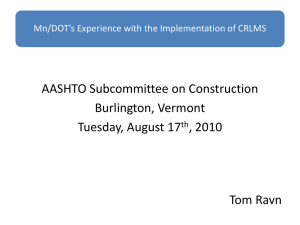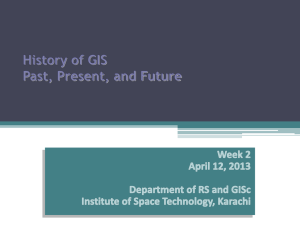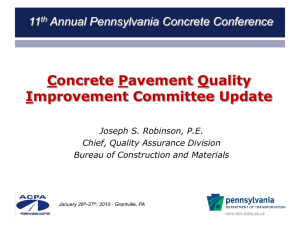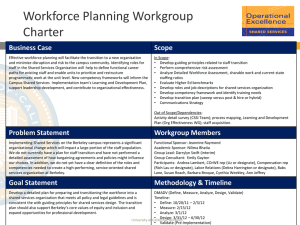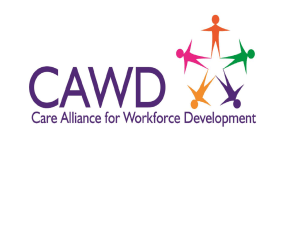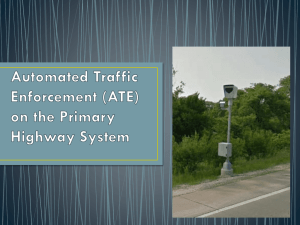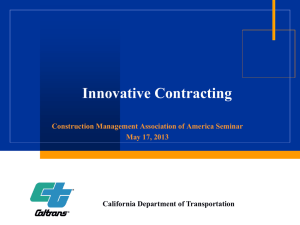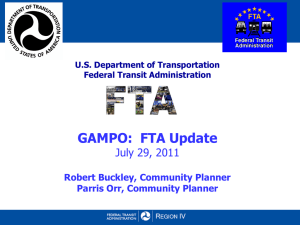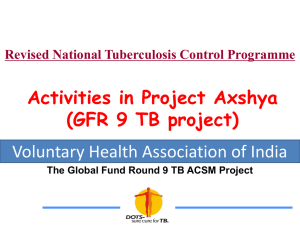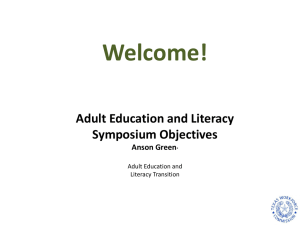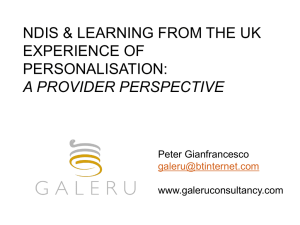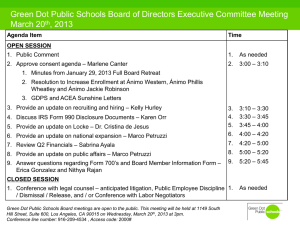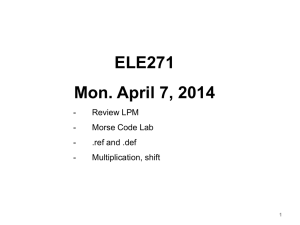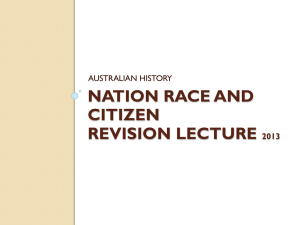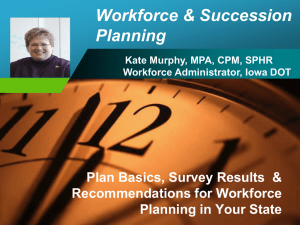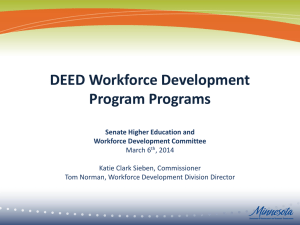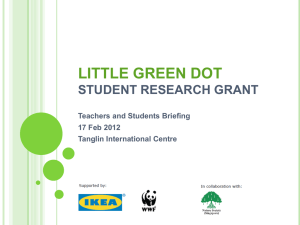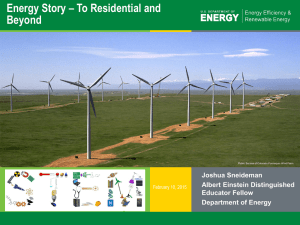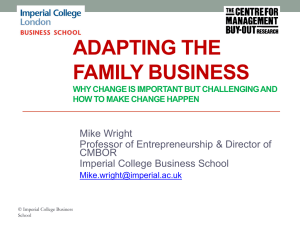Succession Planning and Motivation - AASHTO
advertisement
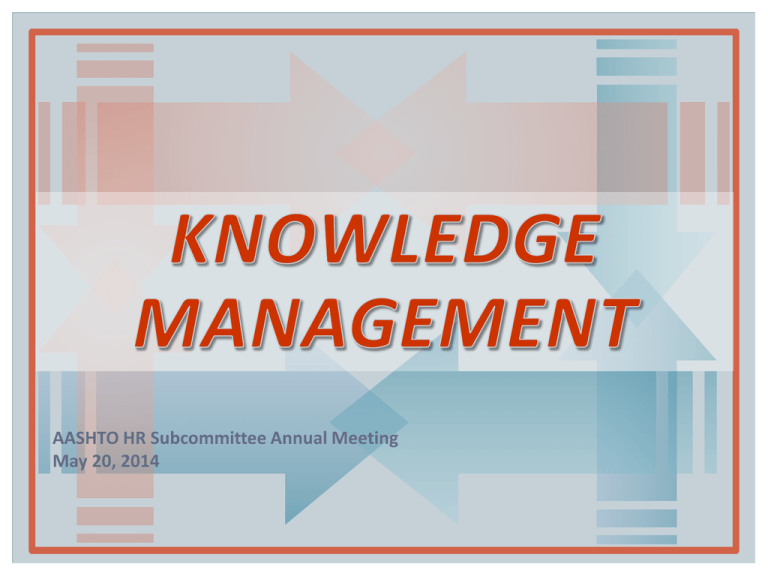
AASHTO HR Subcommittee Annual Meeting May 20, 2014 OVERVIEW • WHY KNOWLEDGE MANAGEMENT? • INDUSTRY TRENDS AND FINDINGS • CALTRANS: A STATE DOT CASE STUDY SECTION 1: CONTEXT FOR OUR DEPARTMENTS & MOTIVATIONS FOR KNOWLEDGE MANAGEMENT CONTEXT & MOTIVATIONS Many state Dots are seeking transformational change Loss of institutional knowledge upon which to build that transformation 4 CONTEXT & MOTIVATIONS o Experienced employees are retiring and/or resigning taking with them operational knowledge and a history of changing practices. o Agencies are reorganizing to align with budget constraints, new strategic directions, and outsourcing expectations, disrupting patterns of communication and information management. o Agencies are responding to increased expectations for efficiency, accountability, and open government, putting more pressure on an aging information management infrastructure. 5 CONTEXT & MOTIVATIONS o In the increasingly mobile workforce, employee tenure is decreasing. In addition to the risk of knowledge loss, this churning of the workforce also brings new knowledge that the organization may wish to leverage. Likewise, there are increasing opportunities to leverage knowledge from industry partners due to increased outsourcing. o Technologies that facilitate remote communication and increase personal computing capability as well as increased use of remote offices and telework are disrupting patterns of institutional information management at a time when security concerns, transparency, and networking are growing. 6 CONTEXT & MOTIVATIONS o Agencies need proven, cost-effective strategies to navigate these changes and demonstrate the capacity to be high-performing, responsive, and agile organizations. o The global economy is transitioning from an industrial economy to a knowledge economy, and the practices that determined success need to be re-evaluated and updated to support an interconnected network of knowledge resources to support decision-makers and practitioners in their work. 7 SECTION 2: INDUSTRY TRENDS & TASK FORCE FINDINGS A Roadmap to Transformation 9 10 Facets of KM Domestic Scan Organization Knowledge Leadership and Context Strategy Culture and Communication Knowledge Assessment and Evaluation Knowledge Operations Knowledge Architecture Knowledge Asset Management Intellectual Capital Management Communities and Collaboration Organizational Learning Knowledge Technologies Innovation and Knowledge Sharing Succession Management Employee Orientation, Learning and Development Identification, Documentation and Dissemination of Processes, Practices and Expertise INDUSTRY TRENDS & FINDINGS Cultivating KM o Domestic Scan on Knowledge Management o TRB KM Task Force o NCHRP Study 20-98 (KM Guidance Doc) o AASHTO Special Committee on Workforce Planning & Development – Resolution approved by BOD in 2011 o Begin where you are. Take opportunities. Address pain points 10 SCAN TEAM MEMBERS John Halikowski & Anne Ellis – Arizona Department of Transportation Carin Michel, FHWA Resource Center, Baltimore Arthur "Turo" Dexter, Federal Transit Administration Lee Wilkinson, Iowa Department of Transportation Becky Burk, Maryland State Highway Administration Lori Dabling, Utah Department of Transportation Maureen L. Hammer, Virginia Department of Transportation Leni Oman, Washington State Department of Transportation Frances Harrison (Subject Matter Expert), Spy Pond Partners, LLC Harry Capers, (Principal Investigator), Aurora and Associates Andrew Lemer (Program Officer), Transportation Research Board 11 KM Domestic Scan Presenters Alberta Transportation (Canada) Alaska DOT&PF Georgia DOT Kansas DOT Missouri DOT Virginia DOT Washington State DOT Wisconsin DOT • Accenture • USDOT-FAA • USDOT-FHWA • USDOT-FTA • Kent State University • Kraft Foods • NASA INDUSTRY TRENDS & FINDINGS Culture Change Establish a vision for the future state of the culture Manage to core values NASA adopted Excellence, Safety, Integrity, and Teamwork Alberta’s “Reaching our Full Potential” initiative Missouri’s emphasis on performance management, teamwork and innovation FAA’s and other’s descriptions of cultural characteristics 13 INDUSTRY TRENDS & FINDINGS Concepts for developing a mature knowledge management practice Limited scale Part time staff Independent initiatives Formal responsibilities Leadership KM activities across silos Improved value to business functions Corporate strategy Lead staff and senior management Dedicated funding Value across the organization Platform for credibility and innovation 14 INDUSTRY TRENDS & FINDINGS Workforce Planning & Succession Management o Workforce Planning o Risk Assessment o Succession Planning o Staff Retention o Employee Interviews 15 INDUSTRY TRENDS & FINDINGS Employee Orientation, Learning & Development o New Employee Orientation o Employee Growth and Development o Communities o Storytelling 16 INDUSTRY TRENDS & FINDINGS Communities and Collaboration o Knowledge Mapping o Communities of interest/practice o o Formal o Informal Fostering collaboration o In person o Virtual 17 INDUSTRY TRENDS & FINDINGS Identification, Documentation and Dissemination of Processes, Practices and Expertise o Content Management Function/Policies/Processes o Lessons Learned & Case Studies o Institutional Memory/ Critical Knowledge Retention o Business Process Documentation o Expertise Identification 18 INDUSTRY TRENDS & FINDINGS Supporting Knowledge Management o Designated function – location and responsibilities o Role of leadership o Fostering a culture of knowledge sharing o Recognition and rewards 19 Evolving Resources KM Domestic Scan Report – soon Webinars on specific functions of knowledge management – plan and distribution process in development NCHRP 20-98 Report – est. completion, April 2015 20 SECTION 3: SPECIFIC CASE STUDY: CALTRANS KM MODEL CASE STUDY: CALTRANS KM MODEL o Knowledge Management Impetus o Alignment with Strategic Planning and Goal Setting Process o Development of KM Concept o Development of KM Guidebook and Website o Training to New Supervisors o Ongoing KM marketing and application in succession planning, workforce planning, and as a workforce risk treatment strategy 22 STRATEGIC PRIORITIES 23 STRATEGIC PRIORITIES Informed and Engaged Workforce o Develop and maintain an informed and engaged workforce that is empowered to effectively deliver our promised projects and programs. o Develop a comprehensive succession planning program. 24 GUIDEBOOK http://www.dot.ca.gov/docs/ct_knowledge_transfer_guidebook.pdf 25 KNOWLEDGE TRANSFER 26 INFORMED AND ENGAGED 27 FOUR BUILDING BLOCKS Face-to-Face: Group Face-to-Face: Individual Multimedia Rotational Programs 28 FACE-to-FACE: GROUP Boot Camp Best Practices Meetings / Studies Communities of Practice Critical Incident Reviews / Lessons Learned Expert Storytelling Knowledge Fairs 29 BOOT CAMP 30 COMMUNITIES OF PRACTICE 31 FACE-to-FACE: INDIVIDUAL Cross-Training (Position Backup) Job Shadowing Mentoring Programs Structured On-The-Job Training (OJT) Transitional Training (“Double Fill”) 32 JOB SHADOWING 33 MENTORING PROGRAMS 34 MULTIMEDIA Expert Interviews / Expert Storytelling Knowledge Maps Wiki 35 EXPERT INTERVIEWS 36 WIKI 37 ROTATIONAL PROGRAMS JOB ROTATION 38 JOB ROTATION 39 KNOWLEDGE TRANSFER 40 FUTURE GOALS Training Outreach 41 QUESTIONS California Department of Transportation 1120 N Street, MS #49 Sacramento, CA 95814 Washington Department of Transportation 310 Maple Park Avenue SE Olympia, WA 98504 Michelle Tucker, Chief Risk and Ethics Officer Michelle.Tucker@dot.ca.gov Leni Oman, Director, Office of Research & Library Services OmanL@wsdot.wa.gov
